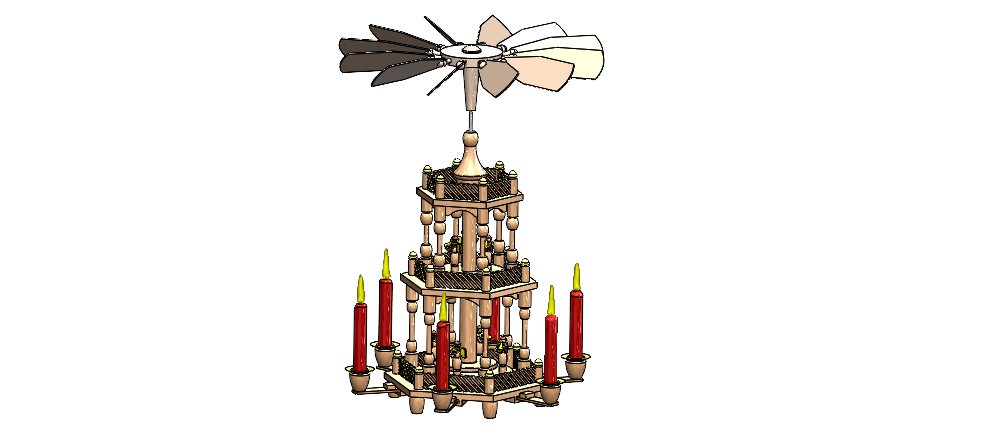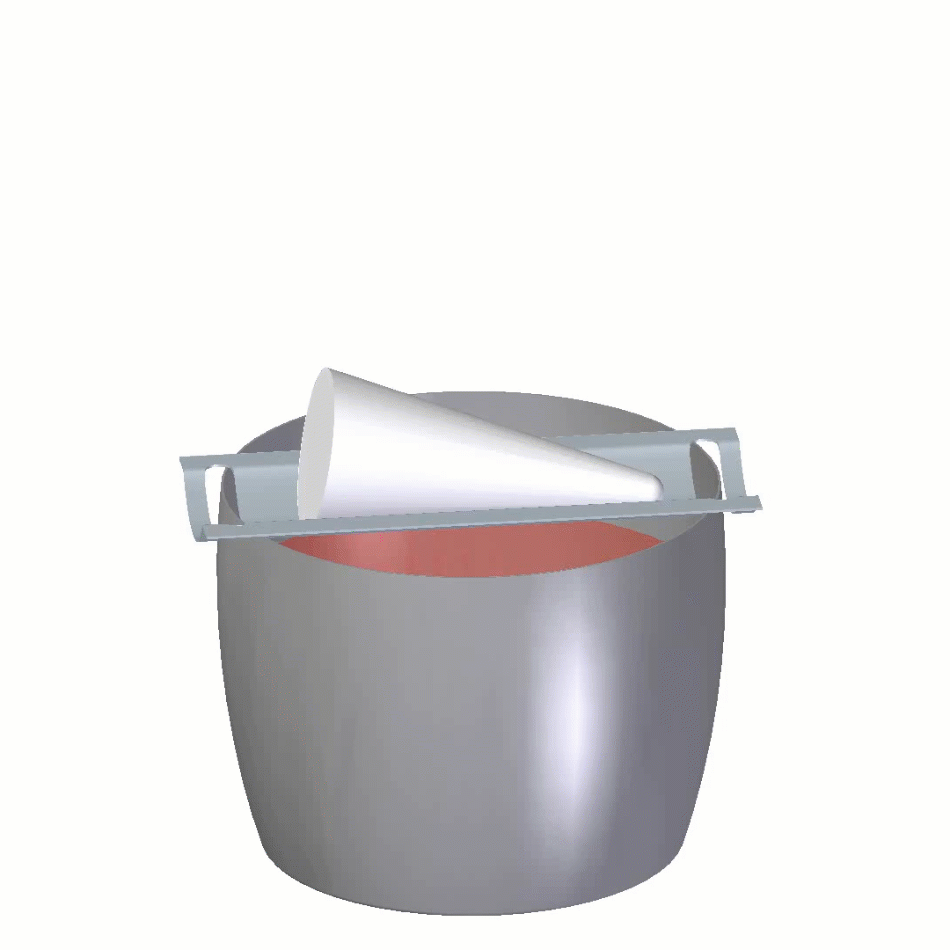4th Advent Simulation: The Christmas Pyramid

This week is my final Advent simulation as it was the last weekend before Christmas and only a few doors left on the Advent Calendar. As in the other 3 posts, I’m going to introduce you to another tradition via CFD simulation. If you have missed the previous Advent simulations, take a look at the links at the end as I’m sure you will like or have heard of at least one of them, depending on where you are from.
This week I want to bring you the Christmas pyramid, another German tradition which I think is a little bit more familiar to many than the Räuchermännchen (incense smoker) from my 2nd post.
The Christmas Pyramid
This very nice piece of woodwork is originally also from the Ore Mountains (Erzgebirge), just like the incense smoker. You can pay a lot for some larger models such as the one shown in my simulation. The Christmas pyramid is a carousel-like (merry-go-round) structure with typically some figures on it. These can be animals, humans, trees but also very often angels or Christmas season related figures.
Typically these figures are standing on a disc that has a metal rod in the center which stretches all the way up to the top on which a fan is mounted. The fan can come in various shapes and number of blades and in some models you can adjust their angle.
The pyramid can have several levels and usually there is a disc on every level. At the base you usually have 4-6 candle holders on the outside of the pyramid and on some pyramids with multiple levels there might also be additional candle holders on one of the higher levels.
The metal rod in the center (the axle) is pointed at the bottom and placed on a small, smooth cup for low friction. As the candles are lit, the heated air rises up and causes the fan to spin. Each disc on every level is attached to the axle and will spin with the fan as long as the candles are creating enough convection for the fan to be propelled.
The Christmas Pyramid originates from medieval times and is based on the superstition that at night, it keeps harm at bay. Some of the superstitious traditions from various regions of Europe have merged into the creation of the Christmas pyramid in the Ore Mountain region. At some point, it became a symbol for Christmas. Initially, it didn’t look anything like the pyramid today and had no rotating components etc. But as it developed over the centuries, it became what it is today. These latest versions are from the 19th century and were solely used indoors. In December 1933 the first outdoor Christmas pyramid was set up and over the decades more and more were created and placed in many cities of the Ore Mountain region. In 2014 there were around 150 of them in that region of Germany. In 2014 the two world’s largest Christmas pyramids were constructed. One in Hannover which you can walk into which is around 18 meters tall and one in Johannegeorgenstadt around 25m tall.
The simulation animation was created by my colleague Mike Gruetzmacher and shows the Christmas pyramid he and his family have at home. Thank you Mike for the amazing detail in the model and for running the simulation on it!!!
The model was simulated in Simcenter FLOEFD with the use of a heat source for the candle flames and the sliding mesh approach for the rotating fan.
With that, the whole of Siemens and Simcenter FLOEFD team wish everyone happy holidays! If you are celebrating Christmas, how about trying out one of the four traditions I have simulated for you 😉
Enjoy the time with your families and stay safe and all the best for 2021.
Here you can find the previous Advent simulation posts:





